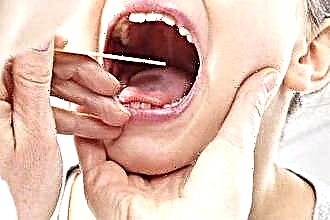Even healthy people sometimes have itchy ears. This is normal, as itching is a non-specific reaction to various irritations. For example, tickling and slight itching in the ear can occur after a bath, pool, or swimming in a river. In this case, it is caused by the ingress of water into the ear and the soaking of sulfur. Itching can also be troublesome after using in-ear headphones, ear plugs, etc.
Mechanical irritation of the ear leads to increased production of sulfur, which, in turn, provokes itching. If itching in the ears is associated with similar reasons, treatment is not required - it is enough to learn how to properly care for the outer ear.
 In this article, we will show you how to do it at home. In other cases, ear itching is the first symptom of dermatological diseases - psoriasis, eczema, allergic dermatitis, otomycosis. Also, the occurrence of tickling and annoying itching can indicate serious systemic pathologies, such as diabetes mellitus. How to treat itchy ears in this case?
In this article, we will show you how to do it at home. In other cases, ear itching is the first symptom of dermatological diseases - psoriasis, eczema, allergic dermatitis, otomycosis. Also, the occurrence of tickling and annoying itching can indicate serious systemic pathologies, such as diabetes mellitus. How to treat itchy ears in this case?
Naturally, local treatment will not be enough. To eliminate the problem, complex treatment will be required, aimed not at the symptoms, but at the causes of the disease. Itching will go away only when normal metabolism is restored.
Unfortunately, itchy ears are not always treatable with folk remedies.
The action of folk methods is usually local, having an anti-inflammatory and astringent character. It is recommended to use them for mild itching. If within 3-5 days you do not feel relief, self-medication should be discontinued and consult an otolaryngologist.
Ear hygiene and itching
Most people strongly believe that the more thoroughly they clean their ears, the better. In fact, everything is different, and sometimes diligent ear cleansing has more negative consequences than even neglecting this procedure. The wax from the ear canal is not dirt, but a moisturizing lubricant that has antiseptic, water-repellent and thermal insulation properties.
It is recommended to wash the auricles every day, and to clean the visible part of the ear canal from wax - no more than once a week. This restriction prevents unnecessary irritation of the ear canal skin and sulfur overproduction.
If a person cleans their ears too often, more and more wax will build up in their ears over time. In most cases, this is what causes itching in the ear.
Similar consequences can occur with frequent use of headphones, earplugs, etc. Such devices irritate the skin of the ear; in addition, they are often carriers of infection.
What should I do if itching in my ears occurs after using the headphones? Wipe them clean with alcohol before each use.
Frequent use of harsh cleansers (soaps, etc.) can also disrupt the functioning of the sulfur glands. At the same time, their activity is inhibited, and the skin of the ear canal dries up. As a result, the ears itch unbearably inside. What to do if dry skin is the cause of itching? Firstly, use a moisturizer, and secondly, wash your ears with warm water without using detergents until the normal functioning of the sulfur glands is restored.
Itching due to sulfur buildup
What to do if the ear itches inside due to the accumulation of excess sulfur? Ears should be cleaned without resorting to mechanical stress. This can be done with a 3% hydrogen peroxide solution. Follow this algorithm:
- Pour hydrogen peroxide into a pipette and hold it in the palm of your hand to bring the liquid to body temperature.
- Lie on your side. Pour a full dropper of peroxide into the ear canal. In contact with sulfur, peroxide will begin to release oxygen bubbles, which break the sulfur mass into small fragments.
- Turn your head so that the fluid drains out of your ear.
- Clean the auricle with a tissue, wipe the ear canal with a cotton swab (do not use cotton swabs).
- Repeat the procedure for the other ear.
Do not overuse the cleaning of the ear canal with hydrogen peroxide - this procedure should be carried out only if necessary. Peroxide lavage is contraindicated in people with a damaged eardrum.
Another method of removing wax, widely used in folk medicine, is to put oil on the ears. In order to dissolve sulfur, you can bury olive, castor, sea buckthorn or any other base oil. It should be slightly warmed up before use (be careful, it is dangerous to use hot oil). It is enough to put a few drops of oil into the ear canal. The procedure is repeated twice a day for 5-7 days.
Itching as a symptom of the disease
 How to treat an itchy ear? It all depends on the symptom of which disease itching is. Determining its cause is not easy. So, ear itching can be associated with the following pathologies:
How to treat an itchy ear? It all depends on the symptom of which disease itching is. Determining its cause is not easy. So, ear itching can be associated with the following pathologies:
1. Allergic reaction (to shampoo, shower gel, food, tree pollen, etc.). The doctor will help to identify the allergic component in the pathogenesis of the disease. A blood test (allergy test) may be required.
2. Fungal infection of the skin of the ear canal. Sometimes, the only visible symptom is itching in the ear. How to treat a fungal infection? Treatment begins only with the established fact of the presence of fungal mycelium in the ear (this requires sowing a smear from the ear). If the diagnosis is confirmed, the patient will be prescribed treatment. Otomycosis therapy is very long and multistage, but it can permanently relieve the patient of itching caused by the fungus.
3. Bacterial infection (otitis externa) - accompanied not only by itching, but also by other symptoms of inflammation - pain, swelling, redness of the skin. Treatment for otitis externa includes antibiotic ear drops and various antiseptics (such as furacilin alcohol).
4. There is also a mixed, bacterial-fungal ear infection. It is known that fungi and bacteria are antagonists. This means that a significant decrease in the number of bacteria (for example, under the influence of antibiotic therapy) can lead to a sharp deterioration in the patient's condition due to the growth of fungal mycelium. That is why the treatment should be as thoughtful as possible - it is necessary to take into account all possible reactions of microorganisms to the drugs used.
5. Itching can be a symptom of a dermatological condition such as eczema. In the early stages of eczema, the skin of the ear canal thickens, but there are no rashes yet - they appear after a while. Already at the first stage of eczema, the patient experiences severe discomfort, since he itches inside the ears almost constantly. Treatment for eczema includes various ointments and creams that have antipruritic, antiseptic and anti-inflammatory effects.
6. Psoriasis of the ears can appear in patients with psoriasis of the scalp. At the same time, papules of bright pink color, covered with scales of keratinized skin, appear on the auricle and in the ear canal. Psoriasis has an undulating course. During the growth of the affected area, many patients suffer from itching, but when the disease enters the stationary stage, the itching decreases or disappears altogether. It is impossible to completely cure psoriasis today, but it is quite possible to achieve long-term improvement. Among the effective methods of traditional medicine are tar ointments, masks for the scalp with natural oils, masks with red clay, rinsing with decoctions of herbs - nettle, calendula. A good result can be achieved by washing your hair with sea salt. 5 minutes before taking a shower  the scalp should be gently massaged with sea salt and rosemary essential oil. After that, the hair is washed in the usual way, using a non-aggressive shampoo.
the scalp should be gently massaged with sea salt and rosemary essential oil. After that, the hair is washed in the usual way, using a non-aggressive shampoo.
7. Itchy ears can be the first symptom of diabetes. Often it is the itching that makes the patient go for a consultation with a doctor. In diabetes mellitus, itching is a consequence of metabolic disorders in skin cells. It is important to note that with diabetes not only the ears itch, but also the groin area, the inner surface of the elbows and knees, folds of the buttocks or abdomen.
Folk remedies for itching
With the help of traditional medicine, you can significantly reduce the discomfort associated with itching in the ear. First, try flushing your ears with peroxide to relieve discomfort. If itching persists, start treatment.
Instilling oil in the ear canal, in addition to dissolving the sulfur, helps relieve itching. For the best effect, you can add a couple of drops of essential oil to the base oil (1 drop of essential oil is usually taken for 5 drops of the base oil). Used eucalyptus, rosemary, tea tree oil. Essential oils contain tannins - natural tannins with anti-inflammatory and antiseptic effects. Rubbing with alcohol can help kill bacteria that can cause ear inflammation. In addition to being antiseptic, alcohol has an astringent and anti-inflammatory effect, which reduces pain, itching, and congestion in the ears. In otolaryngology, boric, furacilinic alcohol, and calendula tincture are used. It is not recommended to use alcohol instillation for a long time - the course of treatment should not exceed 5 days. Traditional healers also relieve itchy ears with onion juice and garlic. It is not recommended to bury them in the ear in their pure form - it is better to add a couple of drops of juice to olive oil.
Folk remedies can temporarily reduce the discomfort associated with itching inside the ear, but they are unable to resist diseases such as otomycosis, allergic dermatitis, eczema, psoriasis, diabetes mellitus.
Treatment with alternative methods is recommended to be used as an auxiliary therapy, after consulting with your doctor.



